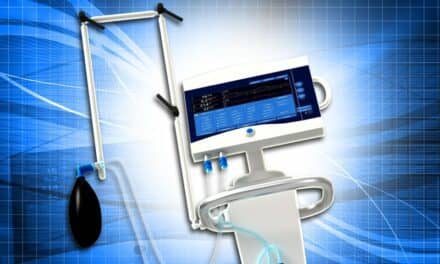By Dave Harrington, PhD
If you’re reading this, then you’ve likely experienced a time when a device crashed on a patient, but the equipment supplier refused to allow you to fix it by selling you the needed parts. Instead, the supplier wanted its service organization to do the work at a much higher cost. The sad part about this is not being ripped off by the vendor—but going back to that vendor time and time again to buy more devices that you will not be allowed to repair.
While sitting on an FDA advisory panel back in 1990, I pushed for open information on repair parts—only to be told by other members of the panel and the FDA to back off since service was where they made their money.
In fact, at a non-medical-equipment-related meeting, a presenter from a well-known company revealed that the company garnered eight times more profits from the service group than from the sale of the device. It reminds me of the old saying: “You can pay me now or pay me later.”
Unfortunately, our suppliers demanded payment now—and later—and we did nothing about it. Remember the scene in the classic movie (at least for some of us!) “Animal House,” where fraternity members kept hitting Kevin Bacon and he said, “Hit me again!”? This is how vendors have treated too many of us in the past. Yes, sometimes we are in “Animal House,” when we should be rebelling against the companies that often rip off us and our patients.
Legislative Issues
Lydia Brasch, a member of Nebraska’s state legislature, recently introduced a bill on the digital right to repair and is pushing it nationwide. As members of the HTM community, we need to get behind this bill and get our local politicians to step up and actually do something that will benefit everyone—not just their donors.
One problem that needs to be addressed is how most companies copyright their software, which is another hurdle for us to get over. When we purchase new devices, we have to remember the new version of the “Golden Rule”: “Those that have the gold make the rules.” Since we are paying, we want it all.
Recently, Eric H. Schultz, the president and CEO of Harvard Pilgrim Health Care—Massachusetts’ second largest health insurance company—wrote a short article in The Boston Globe about the cost of the drug Harvoni. According to Schultz, the drug,
which is used to treat hepatitis C, is $94,500 for the 12-week treatment, compared to $900 in India, $1,200 in Egypt, $48,000 in the U.K., and $53,000 in Germany.
His solution to the Harvoni costs for the Harvard Pilgrim people? Send them and a colleague to the Cayman Islands for a weekend, where they can get the drug and come back home. At the end of the 12 weeks, they can go back to the Caymans for a check-up and stay for a week, all expenses covered.
The nice part about this plan is that everyone would save money, the patient and friend would have a nice vacation, and our insurance costs would possibly decrease. It’s good to see that someone—other than HTM professionals—are looking for methods to save money and improve patient care.
In another article appearing in The Boston Globe, the status and direction of the FDA was questioned. One question that was raised: Why is it taking so long to get FDA approval for some procedures? Stem cells were mentioned in the case highlighted in The Boston Globe.
Although the stem cells were created in San Diego, some American football players had to go to Mexico to get them infused since the process is still “under FDA review” in the United States and probably won’t get final approval for many more months.
Gordie Howe, a man I used to play hockey with, got stem cell treatment in Mexico after several years of extreme disability. Thanks to it, he was able to walk and talk, although he sadly died about a year later. But how many other terminally ill people could be made more comfortable at the end of their lives with this or similar treatments?
The Advent of 3D Printers
Another technology that is coming at us is the 3D printer, which can print numerous items that can be used for replacement parts in the human body. But how are we going to handle this new technology? Will biomeds be allowed to maintain and operate it or will IT try to barge into this also? Just think of all the good that a 3D printer could achieve!
Us elderly people in medical engineering remember when we could actually make items for patients. The list of devices created in the biomed shops at many hospitals is very long, but that all ended in 1976 with the passage of the Safe Medical Device Act P.L. 94-295 and amendments over the years that basically put lawyers and politicians between us and the patients.
Please do not let this happen with 3D printers, as so much good can come from us getting involved—something that will also keep costs down.
Again, let’s work together to continue pushing everything we can for patients and listening to other people’s ideas about new technologies that can be developed. By doing so, we can help more people.
in Medway, Mass. For more information, contact chief editor Keri Forsythe-Stephens at [email protected].






A proposed Massachusetts law, the Digital Right to Repair Bill H.143/S.96 would legally require manufacturers of technology devices to collaborate with persons and/or businesses engaged in the repair of devices.
“Collaborate” – Provide and/or sell, manuals, codes, parts, tools, test devices, software keys/security data without prejudice and at fair market value.
Analogous to the Automobile “Right to Repair” law the was recently enacted in 2012.
Affordable Care, Starts with Affordable technology, The nations’s healthcare cost bottom line is affected by the costs of repairing and maintaining technology.
If a hospital’s support staff can repair and maintain more technology, in house, for lower costs. The bottom line costs of providing healthcare are reduced.
Support staff need access to service information, parts, tools, software, codes and training that many manufacturers will not provide without the legal incentives Bill H.143/S.96, will provide.
What healthcare issues would Passing Bill H.143/S.96, benefit ?
Equipment downtime, can have significant effect on departments, individual caregivers, services and patients. With access to documentation, parts, software, codes and training, hospital in-house staff can often support technology more immediately, with less downtime for reduced costs.In Many cases, the value of immediately repairing a vital piece of technology cannot be measured merely in dollars and sense.
Bill H.143/S.96, would give Hospital based technology support professionals and their 3rd party technology industry partners and allies, a valuable tool to help keep Hospital technology infrastructure running safely, efficiently and effectively while helping reduce costs for the organization.
Letters of support for Bill H.143/S.96, are needed to be sent to legislators from HTM professionals, as concerned citizens and voters.
Adopt technology purchasing policies that reflect “Right to Repair” principles in your institutions.
note: This VA standard make a great template for a good policy.
VAAR 852.211-70 Requirements for operating and maintenance manuals.
Sometimes manufacturer provided service is the right choice. In other cases In-house resources or 3rd parties are better choices.
It should be the right of CEs and BMETs to make that choice that is at the core of this issue and why Bill H.143/S.96, needs the support of Massachusetts’s HTM professionals.
“A company should earn the business of its customers, not mandate that business by eliminating the customer’s options.”*
J Scot Mackeil CBET ACCE, NESCESenior Anesthesia BiomedQuincy, Massachusetts, USA.
An advocate of the “Digital Right to Repair” Bill H.143/S.96, in the legislative process at the Massachusetts statehouse.
Unfortunately, some OEMs continue to push for regulation on “third-party” (in-house and otherwise) servicers as seen in the recent House Bill 2118 and FDA seems to agree more with them despite the lack of evidence uncovered by the 2016 RfC and FDA Conference (see AAMI Newsletter at http://www.aami.org/newsviews/newsdetail.aspx?ItemNumber=4731).
CE professionals have no option but to adopt the activist route of seeking relieve at state level. For states currently considering Digital Right to Repair, please visit https://repair.org/.